Tanzania July 3 - 30, 2014

Tanzania July 3 - 20, 2014
Hi All, Florence and I visited Tanzania again from July 3 to July 20. We brought my daughter Emma (7) with us this time and she met Florence´s son Junior (9) for the first time. We flew with Turkish from Oslo via Istanbul and landed in the middle of the night in Dar es Salaam. We relaxed at the hotel on the 3rd and visited Florence´s family on July 4th.
Day 1, July 5th Dar es Salaam - Mikumi
I had rented a Toyota Landcruiser in Dar. This turned out to be a wreck from 1995 with 230.000 km on the clock. We had an early start from Dar and picked up Junior close to Mbezi on the way out of Dar. It is a long drive on pretty bad roads, but we managed without too much difficulties besides a few speeding tickets. It is amazing how much heavy transport there are on these bad roads and it is amazing how people can drive with these run down heavy trucks. You will see one having broken down at every 5 km and one in the ditch turned over at every 20 km in average.
We arrived at the gate at 2PM and drove in to the park. The first bird was a Long-tailed Fiscal. This was a very common bird throughout our stay in Mikumi. We stopped for some Impalas and found Red-billed Oxpeckers feeding on them. Next stop was the Hippo Pool, Nothing too exiting there: Hamerkop, Water Thick-knee and Cattle Egrets. We continued north in the park and picked up Dusky Indigobirds, Fischer´s Sparrowlark and one of many Red-necked Spurfowl. Suddenly we were in the “fly belt”. There were Tse Tse flies everywhere. Florence is allergic to them, so we closed all windows and kept on driving. Lucky for her, there were not too many birds to see. We picked up Crowned and African Grey Hornbill while driving north. I had a good map, but nearly missed our exit to take us south again. Some of the tracks were in very bad condition and the track I had selected had grass in the middle of the road to the height well above my bonnet. When we finally came through all the grass, I saw a Bronze-winged Courser sitting on the road in front of the car. In the next few kilometers i picked up 3 more pairs of Bronze-winged Coursers. I had only seen this bird twice before in SA, so it was a nice surprise to see 7 of them in one day.
We continued to the gate and was out at exactly 6:30PM without picking up a single more bird of interest. I was very disappointed of the lack of birds we had seen on this first afternoon drive and we had booked 3 days in Mikumi. We left the park and drove the 15km to our lodge, the Tan-Swiss Lodge.
Picture of some of the birds we saw on day 1 in Mikumi:
Wednesday 06 August 2014
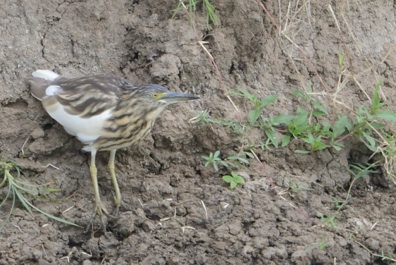
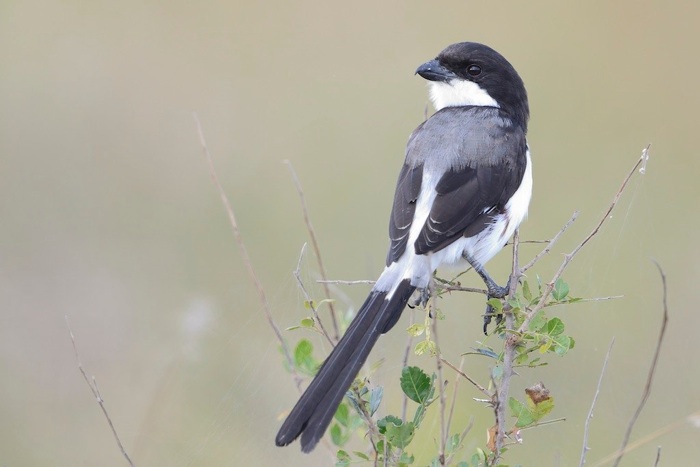
Long-tailed Fiscal
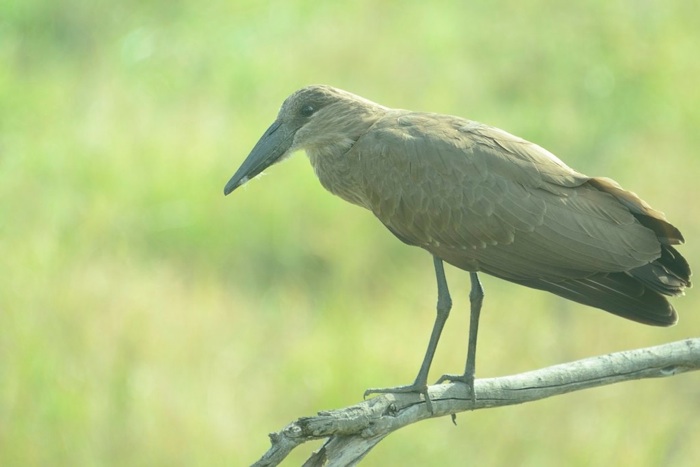
Hamerkop
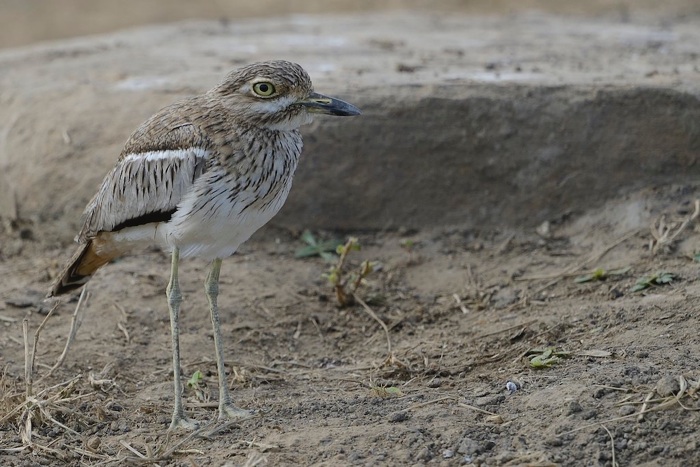
Water Thick-knee
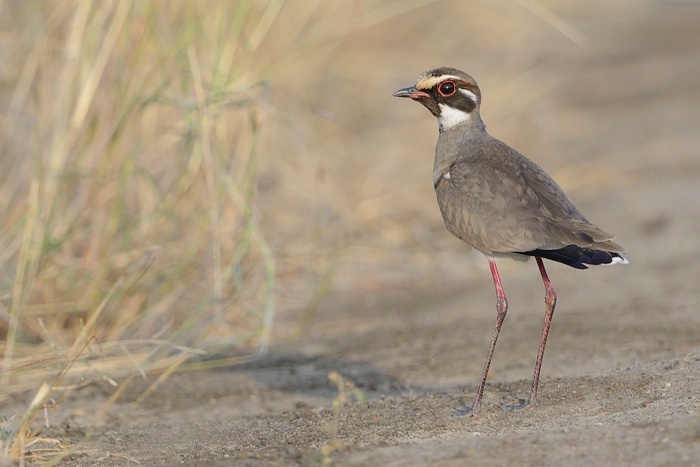
Bronze-winged Courser
Day 2, July 6, Mikumi National Park
We had an early start in to the park. I decided to avoid the fly belt today so we tried to go in a north easterly direction. Just inside the gate we saw two female Lions with 2 cubs. The first bird of notice was a pair of Senegal Lapwings. At a waterhole we added Greater Blue-eared Starling. Further on a nicely displayed Black Coucal. We drove on to a picnic spot to stretch our legs. We found a noisy gang of Northern Pied Babblers here. On the way back to the road from the picnic spot, we found a pair of Red-necked Falcons. Further on: Chestnut-backed Sparrowlark. Then Desert Cisticola and Capped Wheatear. Heading towards the Hippo Pool again ,we found a juvenile Brown Snake Eagle. At the Hippo Pool we found Little Egret and Wolly-necked Stork. I played the Pearl-spotted Owlet and had one of them make an appearance. Just beyond the Hippo Pool we had an African Harrier Hawk. From the Hippo Pool, we drove south towards the grasslands and picked up a family of Southern Ground Hornbills. It was now getting hot, so we returned to the lodge. After lunch Florence and I sat down at the bird bath in the garden and got a few birds: Blue Waxbill (up to 30), Yellow-fronted Canary, Bronze Mannikin, Northern Grey-headed Sparrow and Jameson´s Firefinch.
After lunch Florence and the children stayed at the lodge and I did the afternoon drive myself. This time I decided to go south of the highway. Again, very quiet. I drove towards the Vuma Hills Tented camp and saw on the map that there were supposed to be a loop behind the camp. Again, the road was not used at all. I finally managed to find a Crowned Hornbill followed closely by a Dickonson´s Kestrel. I drove on and was almost back to the main road, when I to my horror found out that the road was gone. It was totally washed away and there was no way I could go forward. With a few very bad words, I was content to turn around and drive the 10+ km on a very bad track back to where I came from. Then, I saw my first lifer of the trip a Pale-billed Hornbill. It flew into the canopy of a tree on the wrong side of my car. I managed to get some poor shots. Then 13 other Pale-billed Hornbills flew over my car but continued on. I went on and then saw some tracks cutting across the grassland towards the highway. I did not feel like going all the way back, so took those tracks and after 5 minutes found myself back on the highway without passing through a gate.
I went straight for the main gate to see if I could pick up one or two more birds. I had a few more Northern Pied Babblers before I found a Black-bellied Bustard. I now had to turn for the gate again and picked up a Red-necked Spurfowl in pretty good light.
Some pictures of birds seen on day 2:
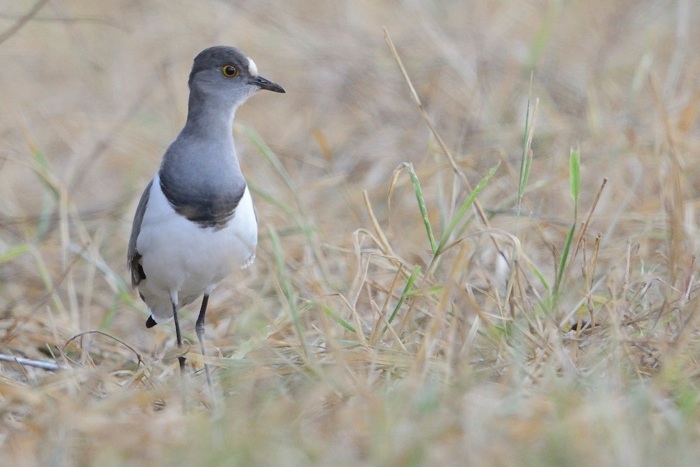
Senegal Lapwing
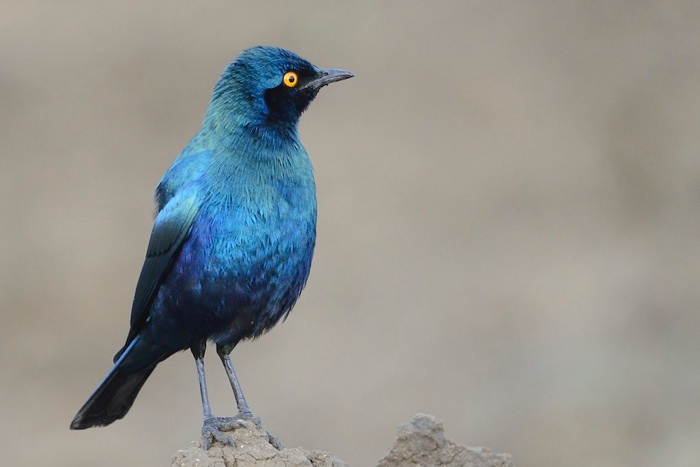
Greater Blue-eared Starling
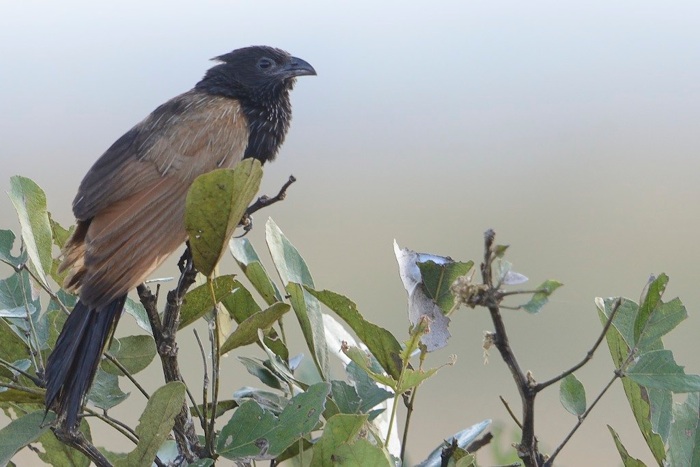
Black Coucal
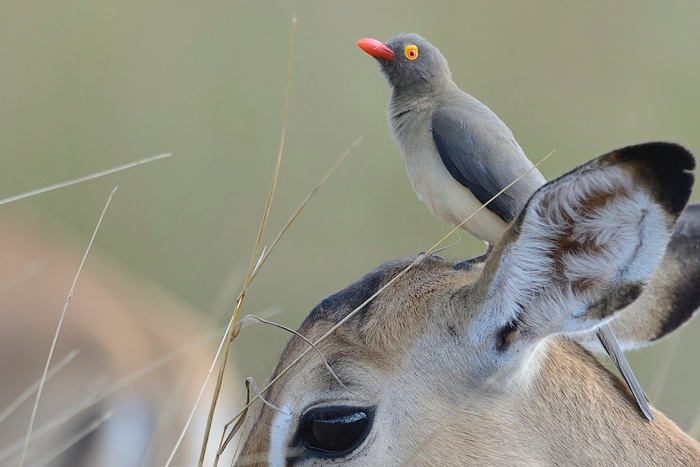
Red-billed Oxpecker
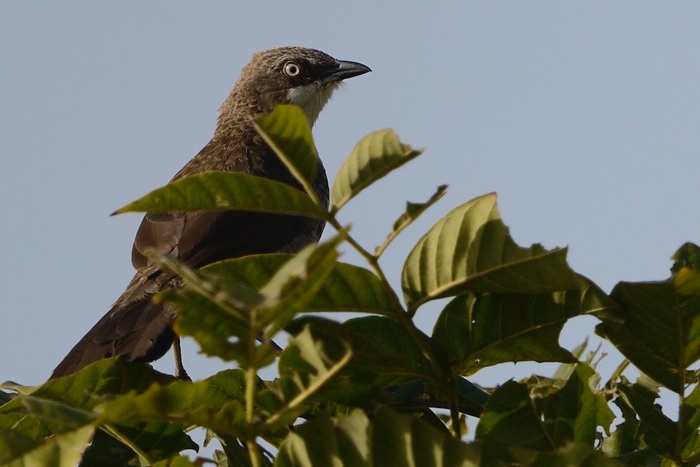
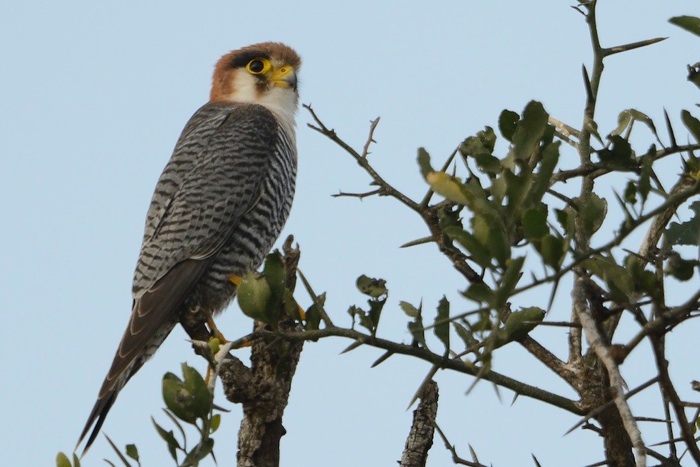
Northern Pied Babbler
Red-necked Falcon
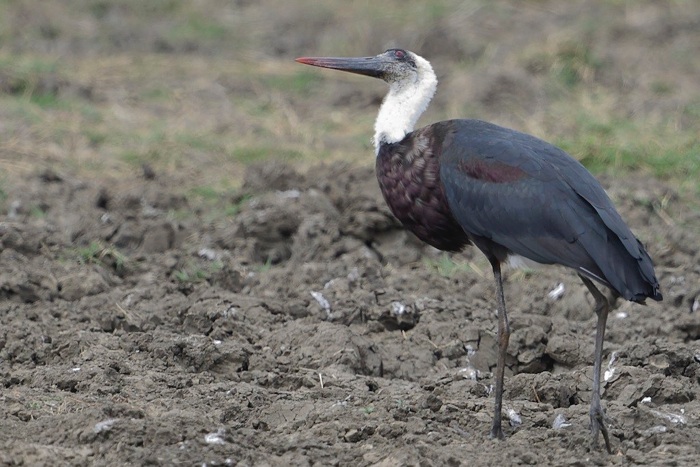
Wolly-necked Stork
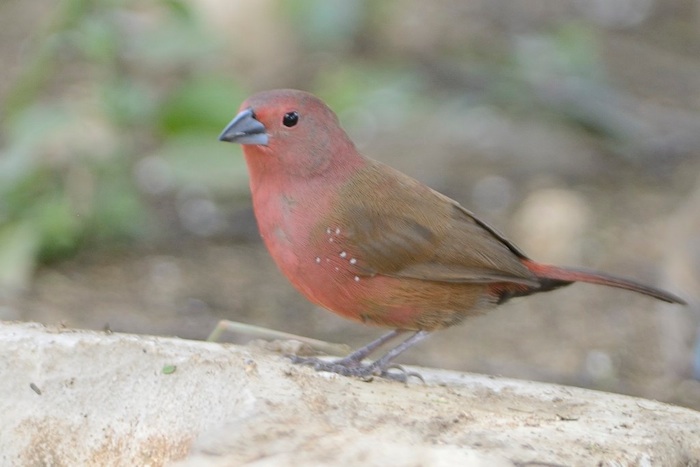
Jameson´s Firefinch
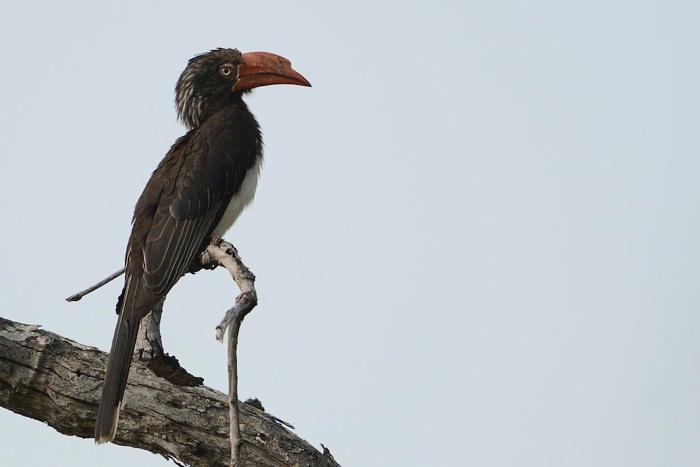
Crowned Hornbill
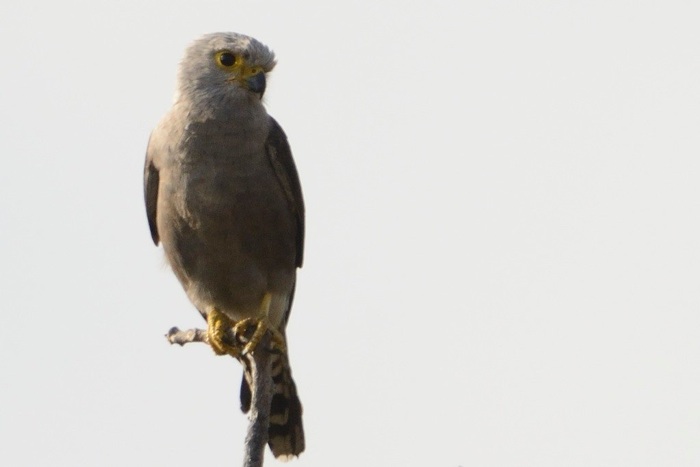
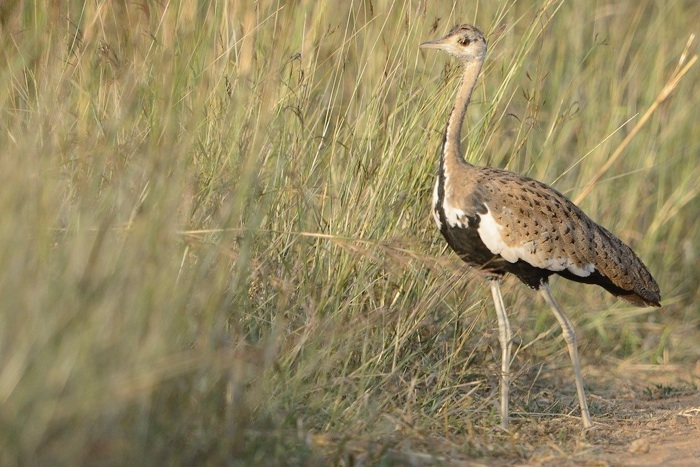
Dickinson´s Kestrel
Black-bellied Bustard
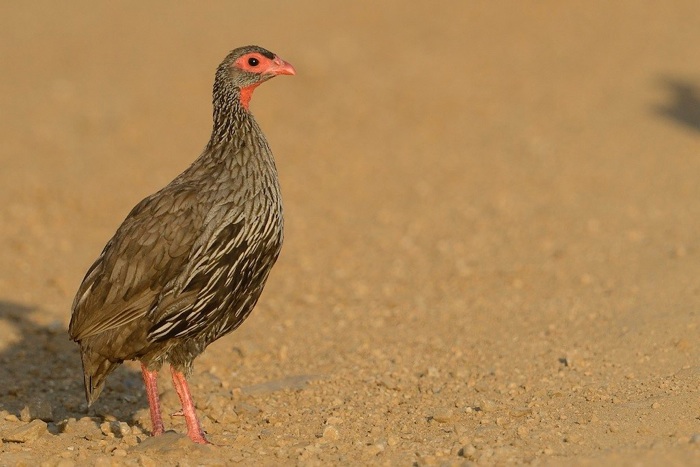
Red-necked Spurfowl
Day 3, July 7, Mikumi National Park
Florence and the children decided to stay in bed this morning, so I took off early alone. Just beside the gate, I had an African Fish Eagle sitting on the road. The first bird of notice inside the park was a Grey-headed Kingfisher. I went to the Hippo Pool and had a nicely perched Red-billed Firefinch. Then I saw a Dickinson´s Kestrel perched far away. I took the road north west into the fly belt again, the only bird I picked up was an African Hoopoe (I did pick up about 2000 Tse Tse flies though). I returned to the Hippo Pool and saw a very strange looking Squacco Heron flying towards me. It settled at quite a distance, but I was in no doubt that this was indeed a lifer: Madagascar Pond Heron. This is a bird I have been looking for many times in Mozambique. I drove towards the grasslands in the south of the Hippo Pool and found two Temminck´s Coursers. I found a small woodland habitat and picked up a Striped Kingfisher. It was getting hot and I returned to the lodge for lunch.
We all drove back to the park. We found one more Dickinson´s Kestrel, a few Little Bee-eaters and a couple of Lesser-striped Swallows. Then a nicely perched Brown Snake-Eagle. We found a family of Southern Ground Hornbills. We drove along for a very long time without spotting anything, before we stopped for some Giraffes with birds on them. These turned out to be Yellow-billed Oxpeckers.
Some pictures of birds seen on day 3:
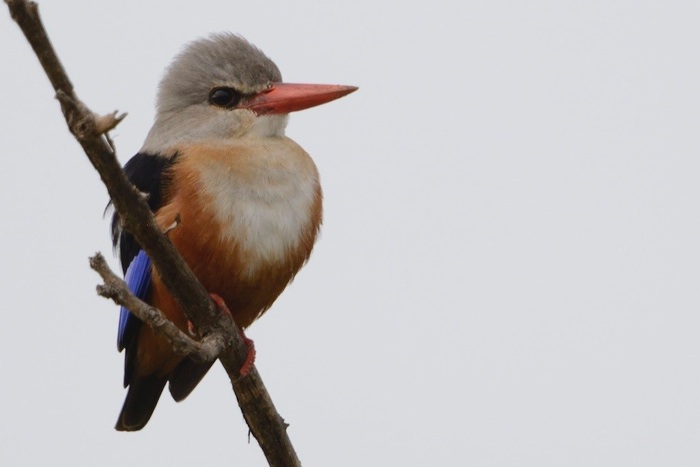
Grey-headed Kingfisher
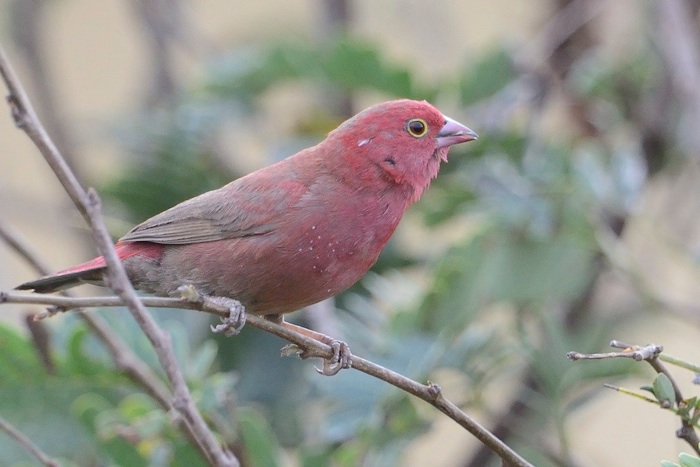
Red-billed Firefinch
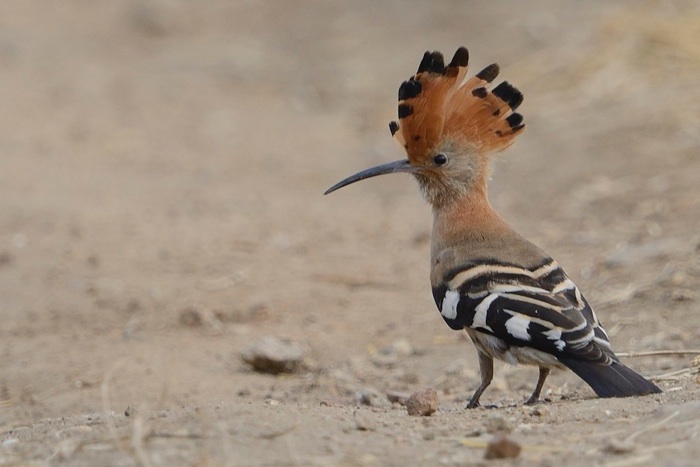
African Hoopoe
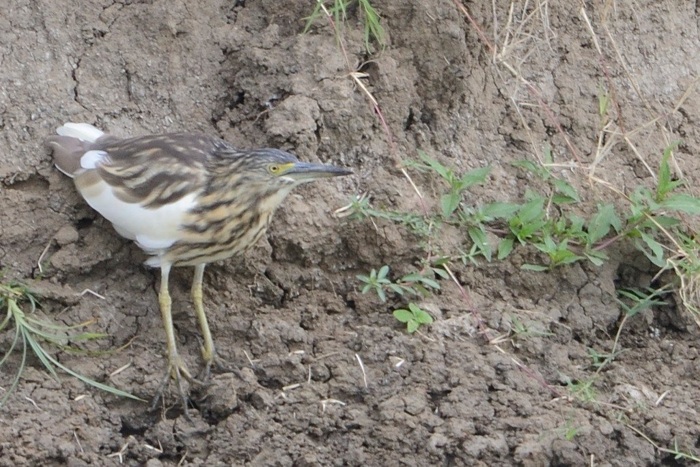
Madagascar Pond Heron (Lifer)
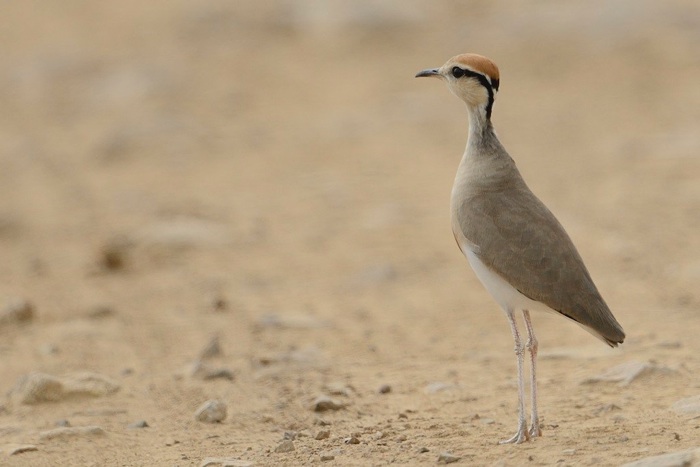
Temminck´s Courser
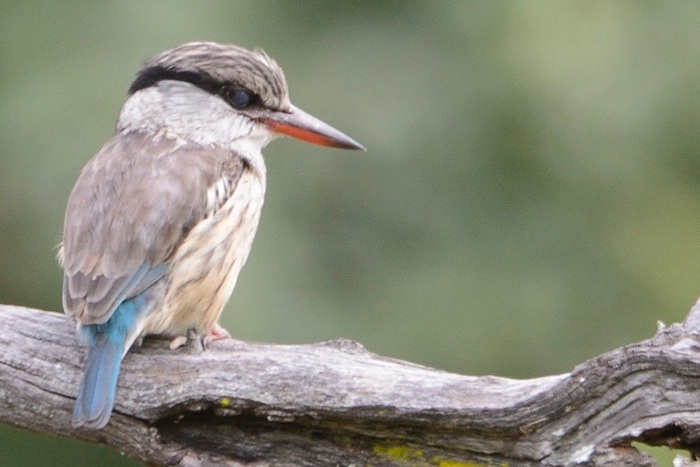
Striped Kingfisher
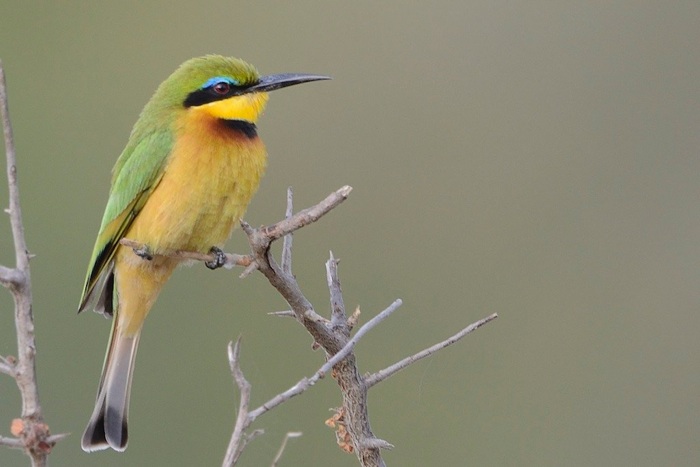
Little Bee-eater
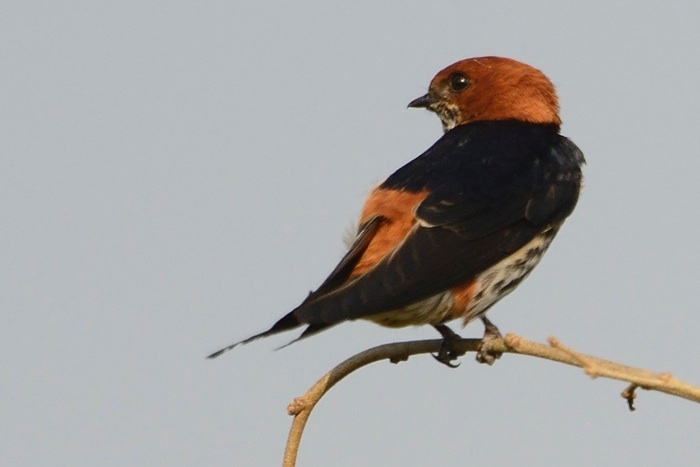
Lesser Striped Swallow
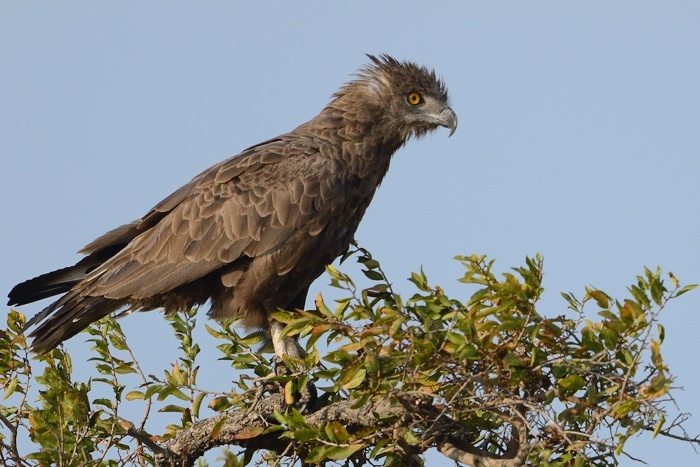
Brown Snake-Eagle
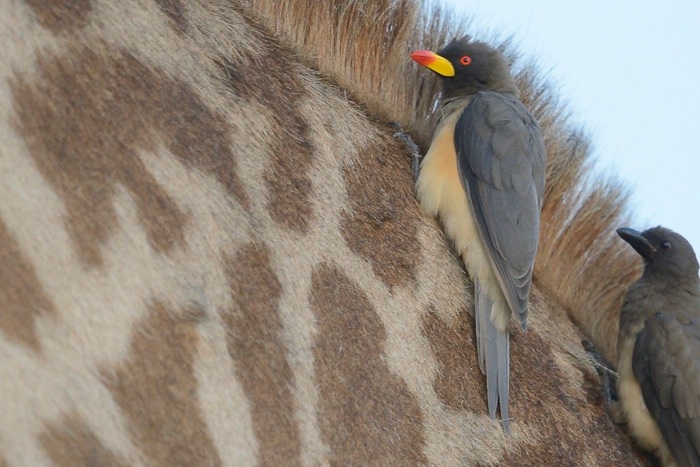
Yellow-billed Oxpecker
Day 4, July 8, Mikumi - Udzungwa
We were supposed to have an early start into the park today, but with the few and far between birds Mikumi represented, I was not up for it. Instead we relaxed in the morning and was on our way to Udzungwa at around 10:00. The first part of the drive was lovely and finally the Kilombero flood plain opened up. We arrived at the Udzungwa Forest Camp (Honde Honde) for lunch and settled in. We had choosen a Banda that could sleep all 4 of us. Pretty rustic, but it served our purpose good. In the tress around camp, we had plenty of Crowned, Trumpeter and Silvery-cheeked Hornbills. I found out that the guide I thought were booked for us had already been booked by a Belgian and a Frenchman. I met the guide and he looked at my target list and told me that I could get the White-tailed Cisticola close by. We started walking and walking and walking through villages before we finally were on the flood plains (We could have taken the car, and had more time for birding?) The first nice bird was a Blue-spotted Wood-Dove. This is a bird that I have only seen in Zimbabwe and the few birds I have seen have been very shy, but this bird, we could almost touch before it flew off. The Blue-spotted Wood-dove is a very common bird in the area. We saw a Lizard Buzzard before the guide found a couple of White-tailed Cisticolas. This bird is very endemic and restricted to the Kilombero flood plains. I was actually surprised that we found it so far from Ifakara. On the way back, we saw 2 Red-necked Falcons perched on a Pylon and also a Palm-nut Vulture in a tree close to camp.
Some pictures of birds seen on day 4:
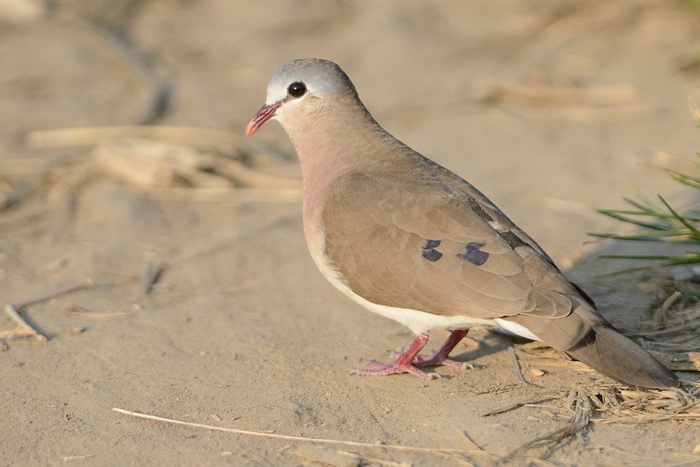
Blue-spotted Wood-Dove
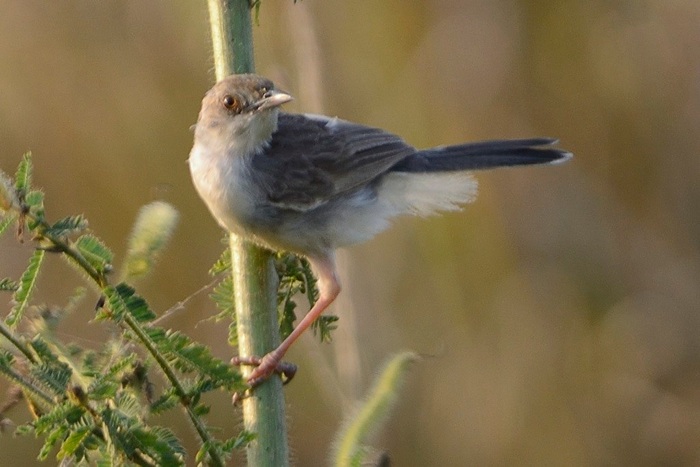
White-tailed Cisticola - endemic to the Kilombero flood plains (lifer)
Day 5, July 9, Udzungwa - Kilombero Flood plains at Ifakara
We had an early start but did not reach Ifakara before 9 in the morning, it was already starting to get hot. Just before the ferry, we saw some Fan-tailed Widowbirds from the road. a little further, the other guide told me to turn off the road for a good place for the Kilombero Cisticola. Sure enough, we found a pair right away. We also found Common and Orange-breasted Waxbills + Black-winged Bishop. The other guide, did not have a clue about birds, he pointed out White-fronted Bee-eaters and called them Madagascar, a Palmnut Vulture was an African Fish Eagle and so on. After finishing with the Cisticola, we came to where our boat waited. It was supposed to be a dugout canoe with a sun shelter. It ended up being a normal boat without a sun shelter. It was already 09:30 when we finally got in the boat and it was starting to get real hot. We had a Yellow-billed Kite soaring over us before we got in the boat. After that, we picked up the usual suspects: Great White Egret, Little Egret, Cattle Egret, Squacco Heron, Grey Heron, Pied Kingfisher, Malachite Kingfisher, White-fronted Bee-eater, Little Bee-eater, African Openbill Stork and White-headed Lapwing. The target bird here was the Kilombero Weaver. I read that it was easy to find here, but we were struggling to find a male. We ended up finding 2 males, but I did not manage to get a decent picture of either one. Other birds we saw on the river included: Pink-backed Pelican, Lesser Swamp Warbler, Reed Cormorant, African Jacana, Palmnut Vulture and Orange-breasted Waxbill. We left the river at around 1PM, it was too hot to continue. We saw many birds on the river and we found our 2 target species. We drove back to camp and relaxed a little while we where entertained by the Iringa Red Colobus Monkeys that are endemic to the area.
I had red about the Magombera forest and asked the no clue guide if he could take me there in the afternoon. We did go and there were quite a few birds I needed there, but the guide did not know any bird calls, so I did not get anything besides a Southern Banded Snake-Eagle
At night I had a present surprise, I met an old colleague from Norway and his family for dinner!!!
Some pictures of birds seen on day 5:
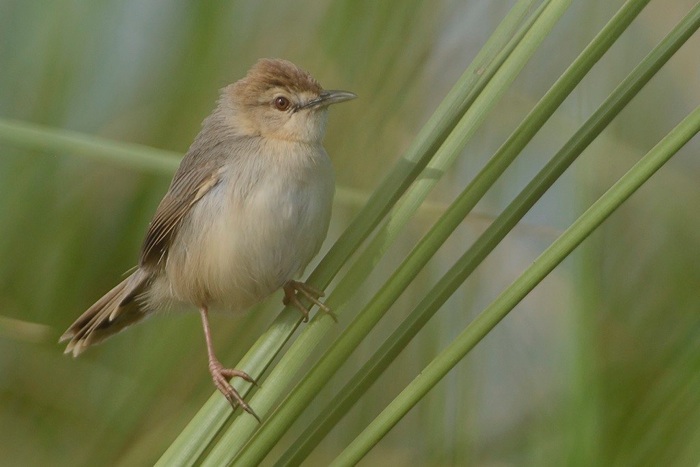
Kilombero Cisticola - endemic to the Kilombero flood plains (Lifer)
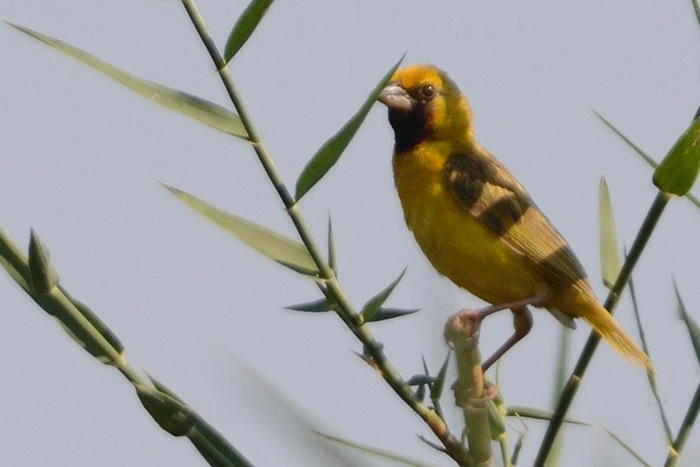
Kilombero Weaver - endemic to the Kilombero flood plains (Lifer)
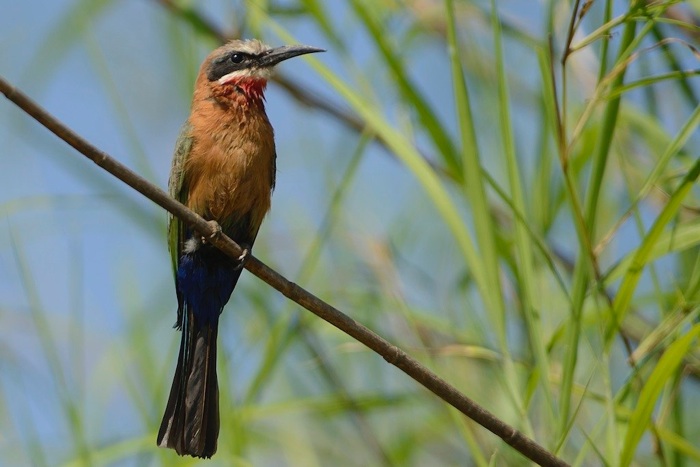
White-fronted Bee-eater
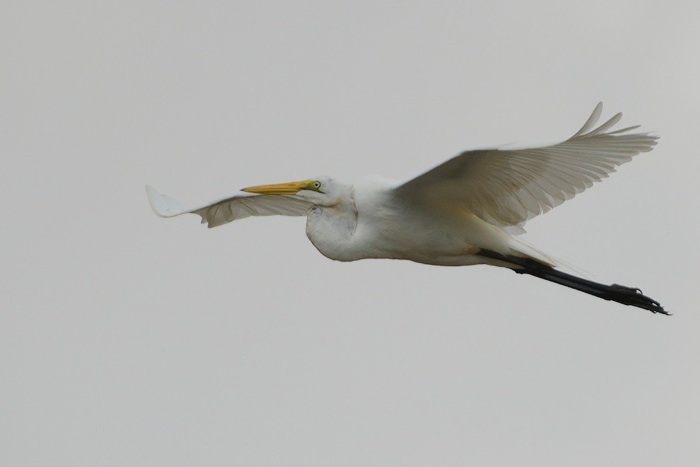
Great White Egret
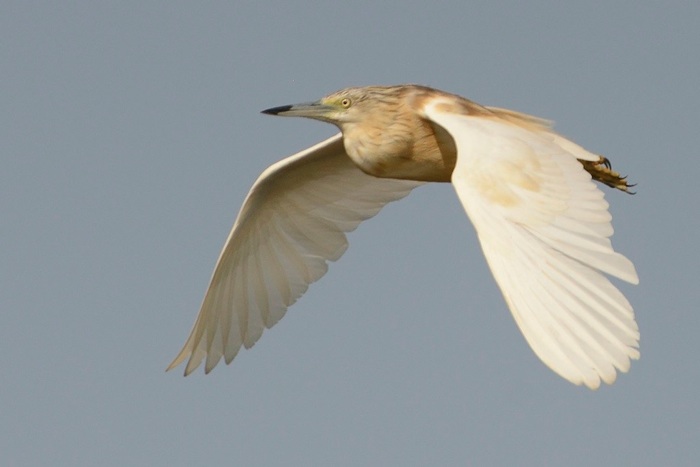
Squacco Heron
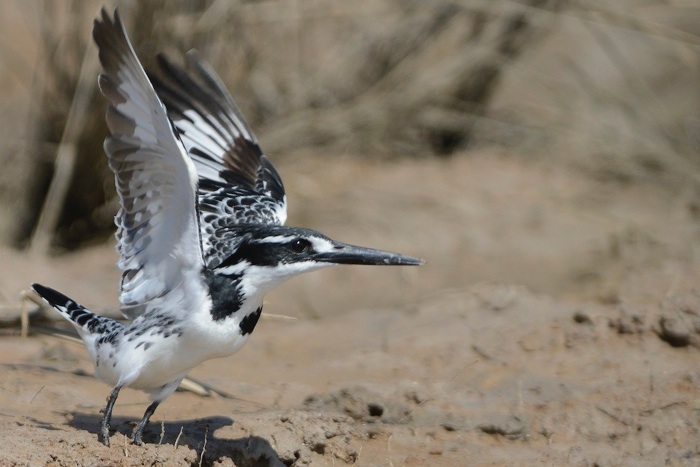
Pied Kingfisher
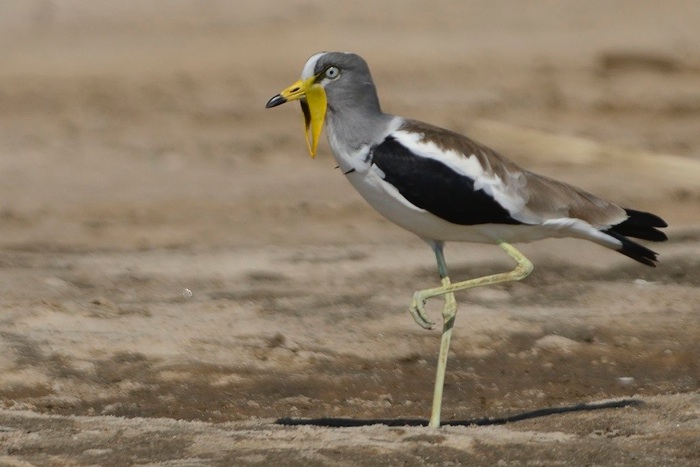
White-headed Lapwing
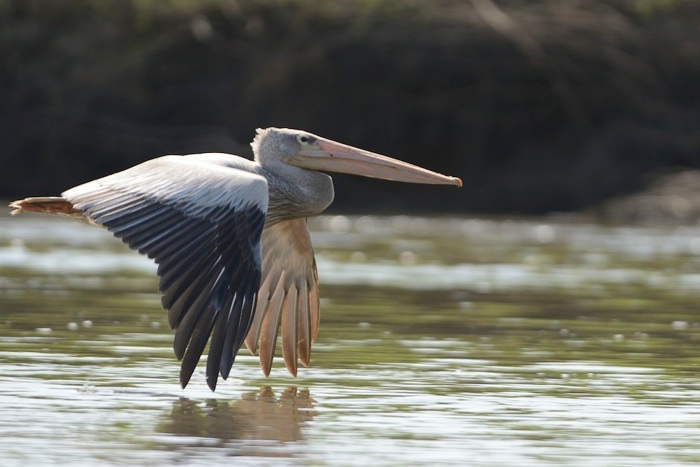
Pink-backed Pelican
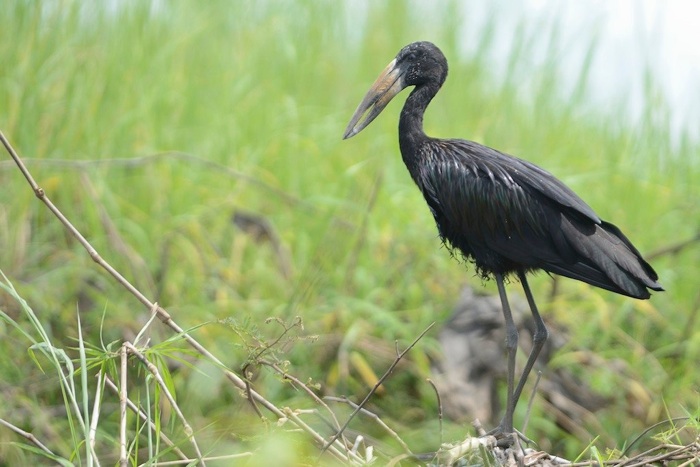
African Openbill (Stork)
Day 6, July 10, Udzungwa
We had decided to take the children to Sanje waterfalls this day. It was a nice hike up the mountain, the children decided to walk to the bottom of the falls and not all the way to the top. We had a pleasant time swimming in the pool at the bottom of the fall and I even managed to add Mountain Wagtail to my Tanzanian bird list.
I had looked at the list of birds to be found in camp and I saw that Lesser Seedcracker were supposed to be around. This is a bird I have seen twice in Mozambique, but never managed to get a picture. The guy that was not a guide decided to take us, but to no avail. We might have heard it, but it did not come out in the open. He pointed out a Magpie Mannikin, that was a Bronze Mannikin etc.
In the evening, I spoke with the Belgian and the French birder, we agreed to go together with the proper guide to Magombera forest the morning after. They had been on a 10 hour hike that guide, but had only seen about 12 different species. Albeit, very good species, it sounds to me that Udzungwa is a tough birding spot.
No Pictures for day 6 :-(
Day 7, July 10, Udzungwa - Mogombera Forest - Mikumi
Together with the Belgian, Frenchman and the guide we headed for the Magombero forest. We were driving my car. As we approached the forest, I was surprised to see that we did not go in to the forest, but walked on the railway lines next to the forest. The forest was thus about 30 meters away from me, not a good distance if you wanted to take pictures of tiny birds. The first bird we saw was a Sombre Bulbul. Then we saw quite a few Sunbirds including, Collared, Variable, Purple-banded and the other even had a glimpse of a (Green) Banded Sunbird. We saw some Yellow-billed Egrets at a dam to the other side. The other saw a Black-and-white Flycatcher and a Half-collared Kingfisher that I missed. I got a Brown-hooded Kingfisher. Then we picked up a Brown Snake-Eagle, African Cuckoo-Hawk and a Little Sparrowhawk. None of them were photographic. It was getting late now when we finally entered the forest. The forest was dead quiet. We picked up a Grey-winged Cameroptera and a Red-capped Robin-Chat. We were to go back to Mikumi today and I promised my wife to be back by noon, so I hurried to the car, only to find that I had parked with my lights on. The battery was dead flat. I did not have jumper cables. It did not help much anyway because there were no cars in the village. Soon I had the entire village under the bonnet of my car. Everyone had a great idea. Someone came with a Solar battery, they used an electrical wire to try to jumpstart. Of course it would not work. Then a ranger arrived in a Landrover. He did not have jumper cables either, but he took his battery out, connected it to my car, took the battery out and put my battery back in. and voila i was on my way again.

A lot of inefficient help
Day 7, continued
I went to pick up the family and we headed back towards Mikumi and Tan-Swiss Lodge. We had planned for an afternoon drive in Mikumi NP, but we were too late for that so Florence and I decided to take a walk in the garden instead. We saw quite a few birds in the garden: Black-winged Bishop, Yellow-fronted Canary, Southern Black Flycatcher, Brubru, African Paradise Flycatcher, Northern Grey-headed Sparrow, White-browed Robin-Chat and a breeding pair of Collared Palm-Thrush. Florence found the nest on a palm frond.
Some pictures from the garden of Tan-Swiss lodge on Day 7:
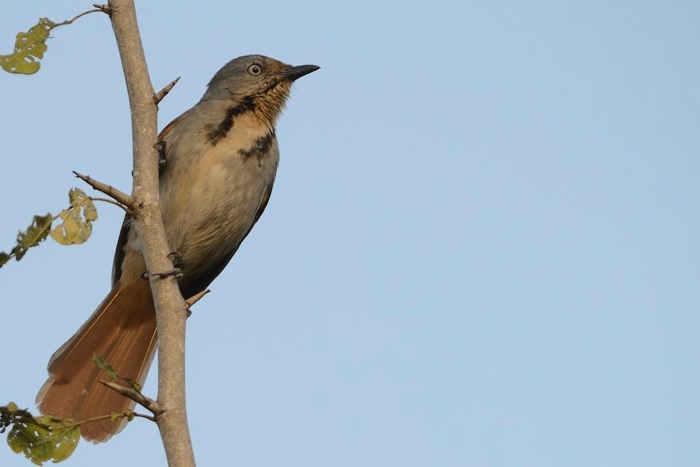
Collared Palm Thrush
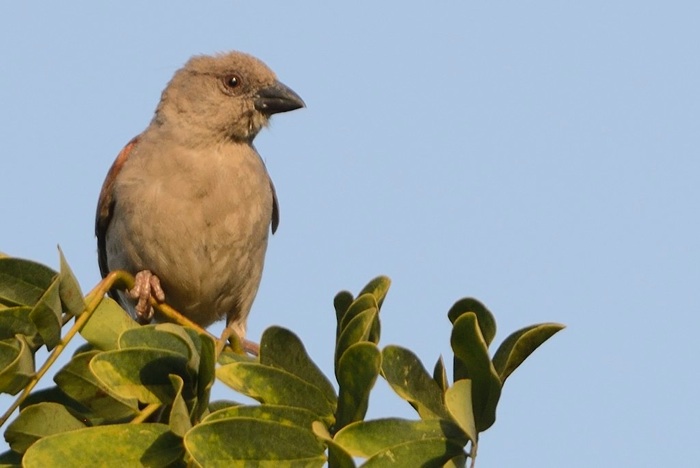
Northern Grey-headed Sparrow
Day 8, July 12, Mikumi NP - Dar es Salaam
This was the day that we were going back to Dar. However; the plan was to do a morning drive in Mikumi NP first. I studied the map and saw that we could go Northwards in the park to Fox`s Safari Camp and then go out to the main road north-east in the park. Again, it was a very very slow day with very few birds: Fischer´s Sparrowlark, Yellow-throated Longclaw, Brown Snake-Eagle. At a waterhole we found a Common Sandpiper and a flock of Mottled Swifts! in the air. Further on, we saw a family of Southern Ground Hornbills and a few Bateleurs. We soon hit the fly belt and closed all the windows. Nothing more to see and soon enough we hit the main road and were on our way back to Dar.
A few notes on Mikumi and Udzungwa: Maybe I visited the wrong time of year, but Mikumi NP was very very disappointing. Yes, I did get some nice birds, but the number of birds seen were very low. We could drive for 2 hours without seeing a single bird of interest. Udzungwa NP has a very high number of endemic species, but I believe the birding there is very tough. Certainly not something you should attend bringing children. It did not help that our guide had been given to someone else. I need to go back to Udzungwa NP because there are still many birds I need there. Next time I will make sure that the guide is firmly booked and I need to prepare for some very strenuous hikes.
One picture from Day 8:
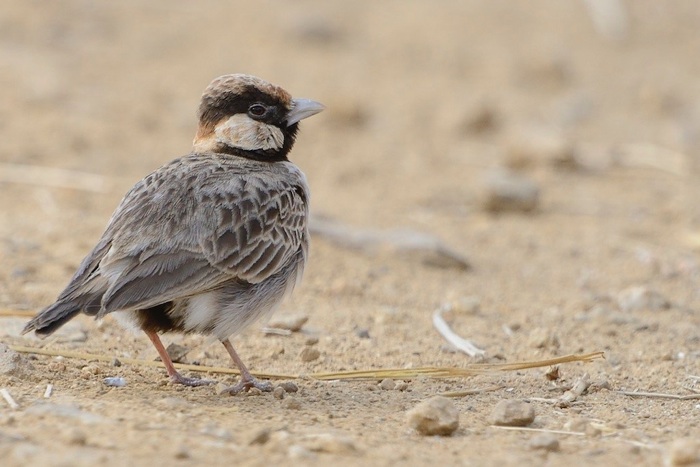
Fischer´s Sparrowlark
July 13 - 20, Dar - Zanzibar - Dar
We stayed in Dar for a couple of days before we headed to Zanzibar by the ferry. In Zanzibar we stayed at Chwaka Bay Resort in Chwaka Bay. The birding part of the trip was now over, but both Florence and I was still on the lookout for birds. We were lucky to get the endemic Red Colobus Monkey in the garden at the lodge. Birdlife at the lodge were dominated by House Sparrows and House Crows, but we did manage to spot a few other birds as well: Grey, Scarlet-chested and Purple-breasted Sunbirds, Yellow Weaver, Madagascar Bee-eater, Whimbrell, Diamorphic Egret, Grey Heron, African Fish Eagle and White-browed Coucal. There was also a resident Green Tinkerbird in the garden. I heard it every day and stood under the tree it was singing from, but I never managed to get a glimpse og it :-(. We left Zanzibar on July 19th went back to Dar and flew home to Norway in the very early morning of July 21.
Species seen on the trip: ca. 150, species photographed ca 100. I only got 6 lifers. This was my third birding trip to Tanzania. So far I have seen 326 species and have pictures of 287 species in Tanzania. I have also managed to get 52 lifers on these trips. I still have about 400 lifers to get in Tanzania, so I am still in an exploritary phase of my birding there.
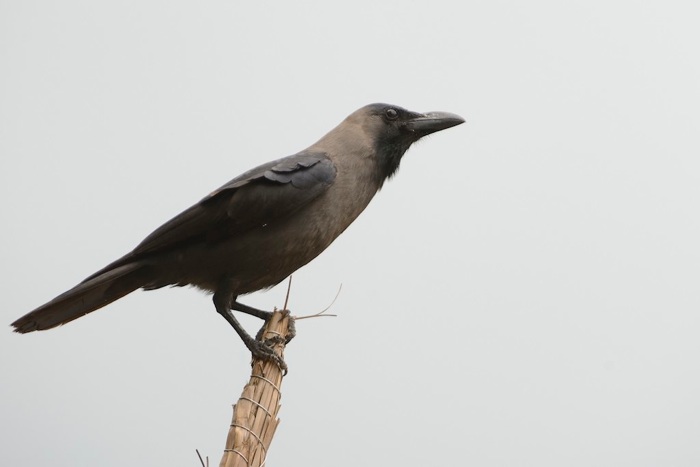
House Crow
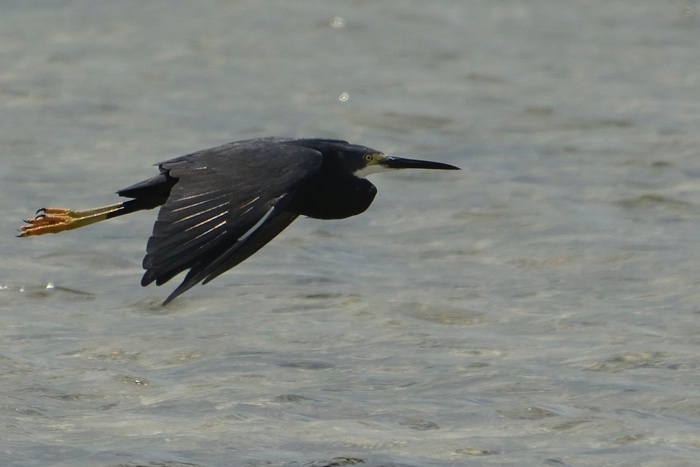
Diamorphic Egret
